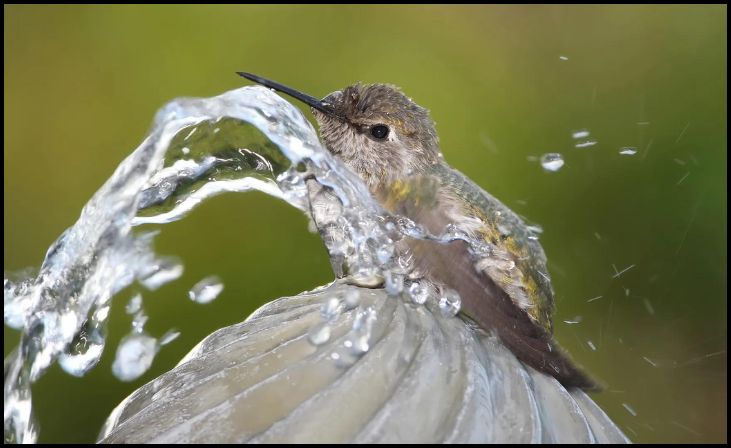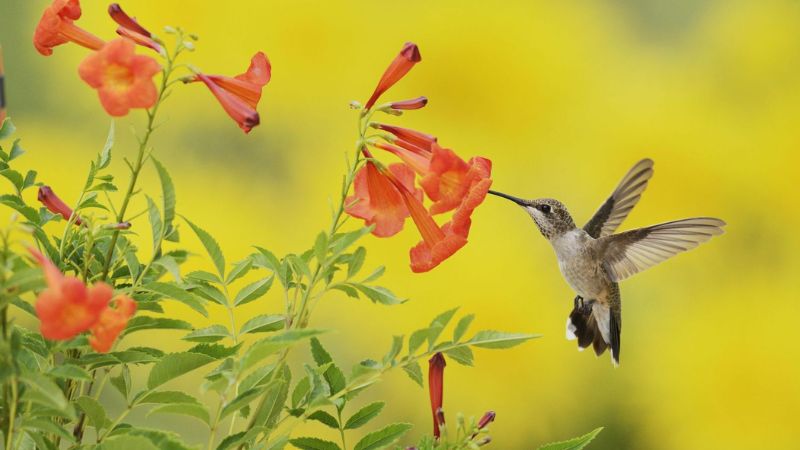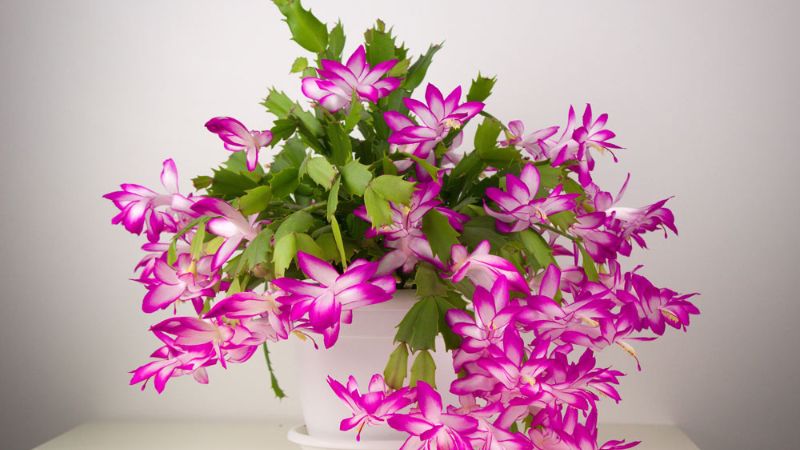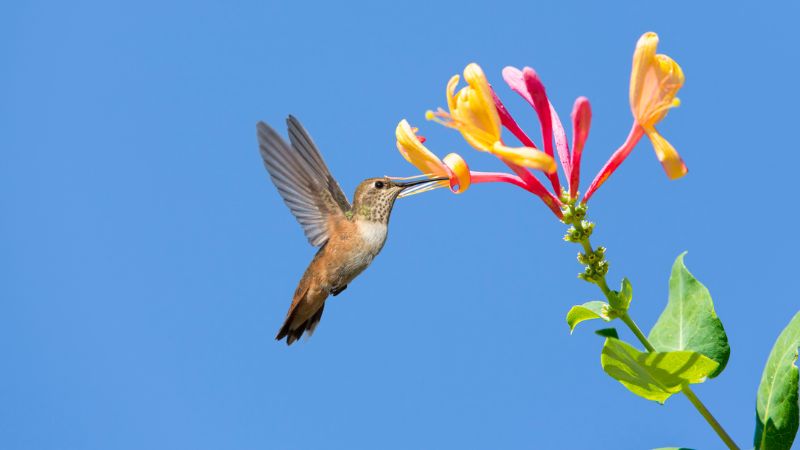Hummingbirds, with their iridescent feathers and rapid wing beats, are a delight to watch and a boon to any garden. These tiny birds not only bring a flash of color and energy to your outdoor space but also help in pollination. Attracting hummingbirds to your garden can be both a rewarding and straightforward task if you follow the right strategies. Here are nine genius tips and tricks to create a hummingbird-friendly haven.
1. Plant Native Flowering Plants

Native Plants Are Key
Hummingbirds are naturally drawn to native plants that produce nectar-rich flowers. These plants are well-adapted to the local climate and soil conditions, making them a sustainable choice for your garden. Look for native species that bloom at different times of the year to provide a continuous food source for the birds.
Top Native Plants for Hummingbirds
- Trumpet Vine (Campsis radicans): Known for its vibrant, trumpet-shaped flowers.
- Coral Honeysuckle (Lonicera sempervirens): Offers clusters of tubular red or orange flowers.
- Bee Balm (Monarda didyma): Its bright, spiky flowers are a hummingbird favorite.
- Cardinal Flower (Lobelia cardinalis): Produces tall spikes of bright red flowers.
2. Use Red and Orange Flowers
Color Matters
Hummingbirds are particularly attracted to red and orange flowers. These colors stand out to them and signal a rich nectar source. Incorporate a variety of red and orange flowering plants in your garden to catch their attention.
Flower Suggestions
- Red Salvia (Salvia splendens): Produces bright red flowers that are highly attractive to hummingbirds.
- Indian Paintbrush (Castilleja coccinea): Known for its striking red-orange flowers.
- Scarlet Sage (Salvia coccinea): A reliable bloomer with vibrant red flowers.
3. Provide Feeders with Homemade Nectar
Supplement with Feeders
In addition to planting flowers, providing feeders filled with homemade nectar can help attract more hummingbirds. Homemade nectar is simple to make and free from additives that could harm the birds.
Nectar Recipe
- Mix one part white granulated sugar with four parts water.
- Bring the mixture to a boil to dissolve the sugar, then let it cool.
- Fill your feeders with the cooled nectar.
Feeder Tips
- Clean Feeders Regularly: Clean your feeders at least once a week with hot water and a mild soap solution to prevent mold and bacteria growth.
- Avoid Red Dye: Commercial nectar often contains red dye, which is unnecessary and potentially harmful. Hummingbirds will find the feeders without it.
4. Create a Water Source

Hummingbirds Love Water
Hummingbirds enjoy bathing and drinking from moving water sources. Providing a water feature in your garden can help attract them.
Water Feature Ideas
- Misting Systems: Hummingbirds love to fly through fine mists.
- Drippers and Bubblers: These create gentle movements that hummingbirds find irresistible.
- Shallow Bird Baths: Place small stones in the bird bath to create a shallow area where hummingbirds can bathe safely.
5. Offer Perches and Nesting Spots
Provide Safe Perches
Hummingbirds need perches to rest and survey their surroundings. Incorporate natural perches like tree branches and shrubs, or install artificial ones near feeding areas.
Nesting Habitats
To encourage nesting, plant trees and shrubs that offer shelter and protection. Thorny or dense shrubs can provide safe nesting spots. Examples include:
- Hawthorn (Crataegus): Provides both nesting spots and food with its berries.
- Blackberry Bushes (Rubus): Offer dense cover for nesting.
6. Ensure a Pesticide-Free Environment
Protect the Food Chain
Pesticides can be harmful to hummingbirds and the insects they feed on. Maintaining a pesticide-free garden ensures a healthy food supply for the birds and supports the overall ecosystem.
Natural Pest Control
- Introduce Beneficial Insects: Ladybugs and lacewings help control aphids and other pests.
- Companion Planting: Certain plants can deter pests naturally. For example, marigolds repel many garden pests.
7. Plant in Clusters
Maximize Attraction
Planting flowers in clusters rather than single plants helps hummingbirds spot nectar sources more easily. Group plants of the same species together to create a more noticeable display of color and scent.
Cluster Planting Ideas
- Create Flower Beds: Design your garden with flower beds that have multiple layers of flowering plants.
- Vertical Planting: Use trellises and vertical gardens to maximize space and attract hummingbirds at different heights.
8. Maintain a Continuous Bloom Cycle
Year-Round Food Source
Ensure that there are always blooming plants in your garden by selecting species with staggered blooming periods. This provides a continuous food source throughout the year, especially during migration periods.
Bloom Cycle Strategy
- Early Bloomers: Plant species like columbine and bleeding heart for early spring blooms.
- Summer Blooms: Include plants like bee balm, fuchsia, and trumpet vine for summer nectar.
- Fall Flowers: Use plants such as salvia and Mexican sunflower to extend the blooming season into the fall.
9. Be Patient and Observant

Patience Pays Off
Attracting hummingbirds can take time, especially if they are not already familiar with your garden. Be patient and give them time to discover your carefully prepared haven.
Observation Tips
- Monitor Flower and Feeder Activity: Take note of which plants and feeders attract the most hummingbirds. This information can help you plan future plantings and feeder placements.
- Adjust as Needed: If you notice certain areas of your garden are more popular, consider expanding those areas or adding more feeders and plants there.
Conclusion
Creating a hummingbird-friendly garden involves a combination of strategic planting, providing food and water sources, and ensuring a safe environment. By following these nine genius tips and tricks, you can attract more hummingbirds to your garden and enjoy the beauty and joy they bring. Remember, the key is to create a welcoming habitat that meets their needs and encourages them to return year after year. Happy gardening!




